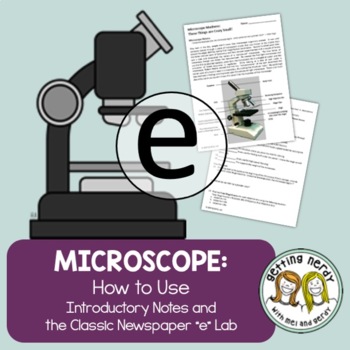- PDF
Description
Do your students struggle with the proper use of microscopes? Our introductory lab on microscope usage and slide preparation will have your student viewing specimen like an old pro.
WHAT'S INCLUDED IN THIS LESSON:
- Data Collection
- Data Analysis
- Results and Conclusions
STUDENTS WILL:
- Learn the parts of a compound light microscope, how to use the different objective lenses and what not to do with a microscope
- Practice what they learn when they view a newspaper “e” under low, medium, and high power
- Draw what they view under the microscope
- Gain an understanding of how microscopes flip the image upside down
SEE HOW THIS LESSON ALIGNS WITH THE NGSS, TEKS or GSE
Because we have created many of our own graphics or have purchased licenses to other graphics with permission, we cannot offer our resources in editable format unless otherwise stated.
TERMS OF USE (TOU):
All rights reserved by GETTING NERDY®️.
• This product is to be used by the original purchaser only
• Intended for classroom and personal use only
• Copying for more than one teacher, classroom, department, school, or school system is prohibited.
• This product may not be distributed or displayed digitally for public view
Failure to comply is a copyright infringement and a violation of the Digital Millennium Copyright Act (DMCA). Clipart and elements found in this PDF are copyrighted and cannot be extracted and used outside of this file without permission or license.
Introduction to Microscopes E Lab © 2012 to present GETTING NERDY®️ All Rights Reserved
www.gettingnerdyscience.com





